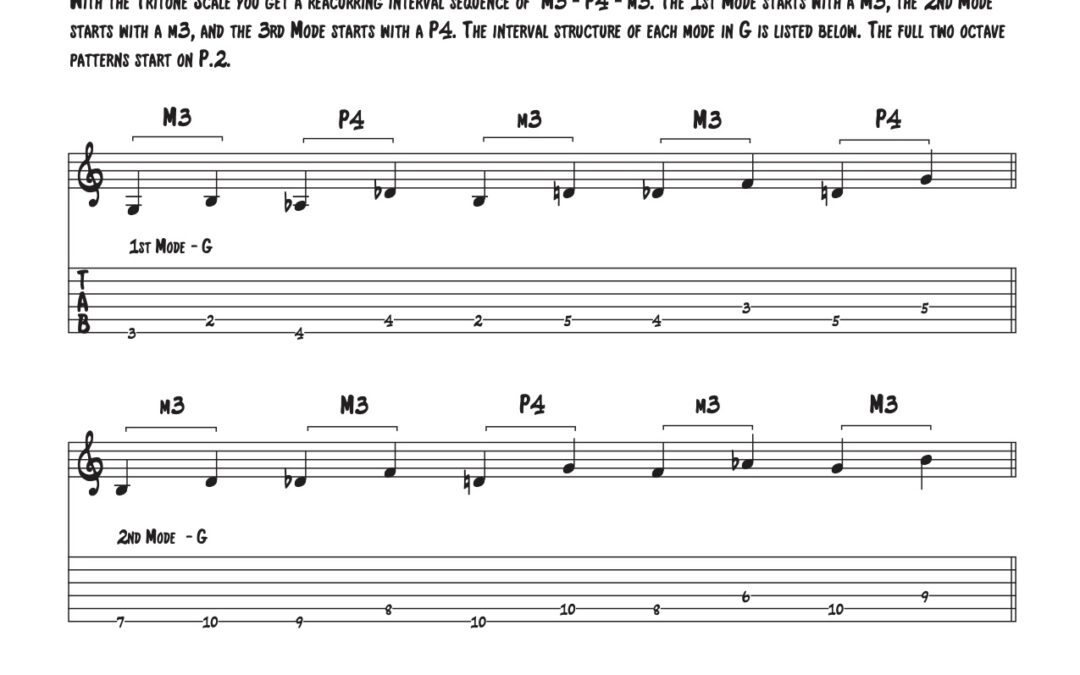by Pete Weise | Sep 5, 2020 | Articles, Recent Videos
This is the second example of how to use Pattern No.1 of the tritone hexatonic scale over a V7 chord. Instead of a typical four-bar ii-V-I progression, I’ve added the VI7alt in the last measure of the phrase, resolving to the ii chord in bar five. As with the...

by Pete Weise | Jul 26, 2020 | Articles, Recent Videos
The tritone scale is created from two major triads that are a tritone apart. In this case, I’m using the G and Db major triads that result in a hexatonic scale G-Ab-B-Db-Dn-F and can be used for altered dom7 lines over both G7 and Db7. This scale can be played...
by Pete Weise | Jul 3, 2020 | Articles, Recent Videos
The tritone scale is created from two major triads that are a tritone apart. In this case, I’m using the G and Db major triads that result in a hexatonic scale G-Ab-B-Db-Dn-F and can be used for altered dom7 lines over both G7 and Db7. This scale can be played...
by Pete Weise | Feb 23, 2017 | Articles, Recent Videos
The tritone scale is created from two major triads that are a tritone apart. In this case, I’m using the G and Db major triads that result in a hexatonic scale G-Ab-B-Db-Dn-F and can be used for altered dom7 lines over both G7 and Db7. This scale can be...
by Pete Weise | Feb 15, 2017 | Articles, Recent Videos
Looking for another way to alter a Dom7 chord, I combined the concepts of triad pairs and tritone substitution to create a hexatonic (6-note) scale. The scales below are for G7 and use the G major (G-B-D) and Db major (Db-F-Ab) triads. When the notes are arranged...


